When the Volume Shadow Copy Service is not working on your Windows computer, you may encounter different types of error messages. VSS is a crucial component of the Windows operating system that allows users to create backups and restore previous versions of files.
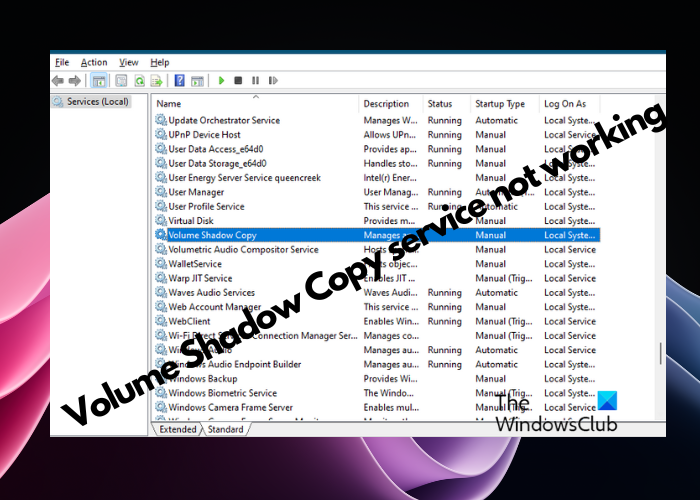
However, there are times when this service may encounter issues and stop working. In such a circumstance, we suggest a few steps to troubleshoot the VSS errors.
Why is the Volume Shadow Copy service not working?
If the Volume Shadow Copy Service (VSS) is not working, several factors could be contributing to the issue, for example:
- If the Volume Shadow Copy service or the dependendancy services are not running.
- There is insufficient free space on the volume where the shadow copies are stored.
- If any of the VSS writers fail to run.
- Third-party software conflicts or interference by antivirus programs may lead to VSS errors.
- If the Volume Shadow Copy provider is not registered in the system.
- Missing and corrupted system files.
- Incorrect registry settings.
- Hard drive errors.
Fix Volume Shadow Copy service not working
To begin with, make sure that the Volume Shadow Copy service is enabled and running. For this, open the Service Manager, look for the Volume Shadow Copy service, right-click on it, and select Start to enable and start the service. The default Startup tpe is Manual.
If VSS is already enabled and running, you may consider other troubleshooting methods to fix the error as suggested below:
- Check the Event Viewer for error messages
- Configure the system restore settings
- Set the Event Log size to a maximum of 64 MB
- Repair Windows system image
- Address different VSS errors.
1] Check the Event Viewer for error messages
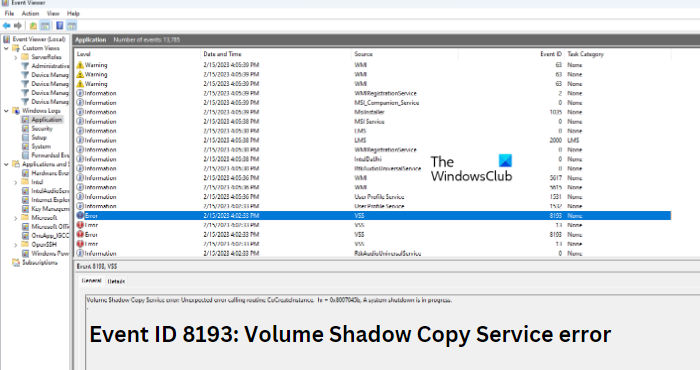
Examine the Windows Event Viewer for any relevant error messages or warnings related to VSS. Review both the Application and System logs for events that might provide information on why VSS is not working. For example, we have a detailed post on the event ID 8193 that indicates a Volume Shadow Copy Service error. You can follow the solutions to fix the issue.
Read: Shadow copies failed to change the storage area maximum size
2] Configure the system restore settings
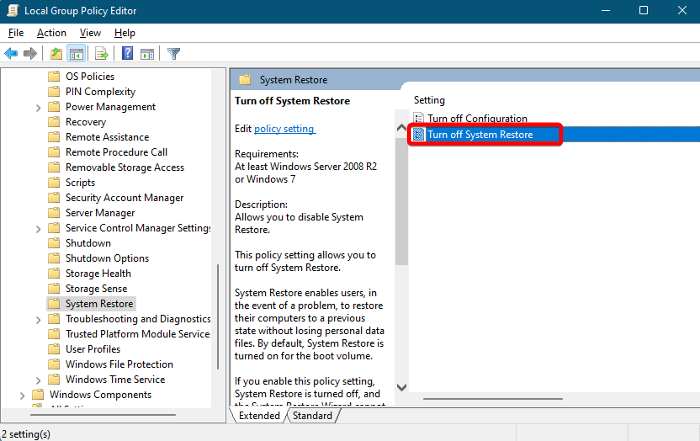
Sometimes, you may encounter a VSS error stating that no restore point could be created or the volume shadow copy service used by system restore is not working. This usually occurs when trying to update the driver. That said, we have a detailed post on how to fix Volume Shadow Copy Service error 0x81000202 or 0x81000203 that addresses this issue. But you can also try changing the system restore settings as below:
Open the Group Policy Editor and navigate to the below path:
Computer > Configuration > Administrative Template > System > System Restore
Now, on the right, double-click to open Turn off System Restore and set it to Not Configured.
Read: Shadow Copies are lost during Backup in Windows 11
3] Set the Event Log size to a maximum of 64 MB
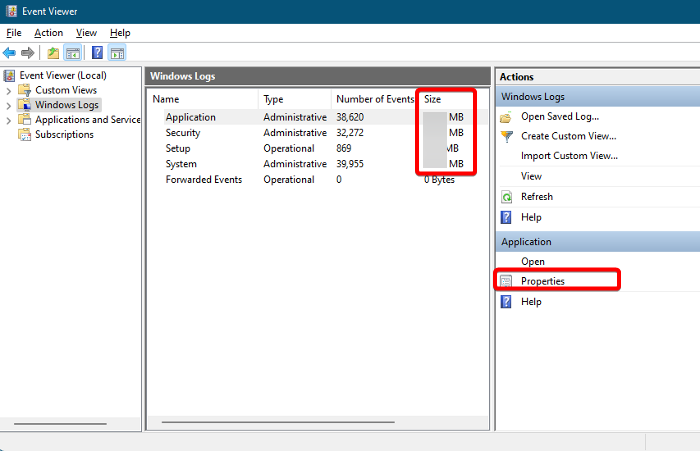
If the Volume Shadow Copy service is still not working, reducing the size of the Event Log to a maximum of 64 MB may get rid of the problem. For this, open Event Viewer from Windows search > select Windows Logs > go to the right > select an Event Log larger than 64 MB > Properties.
Next, under the General tab > Maximum log size (KB) > enter a log size that’s equal to or less than 64000 KB > Clear Log.
Click Yes in the pop-up if you want to save the original log before clearing it, and press OK.
4] Repair Windows system image
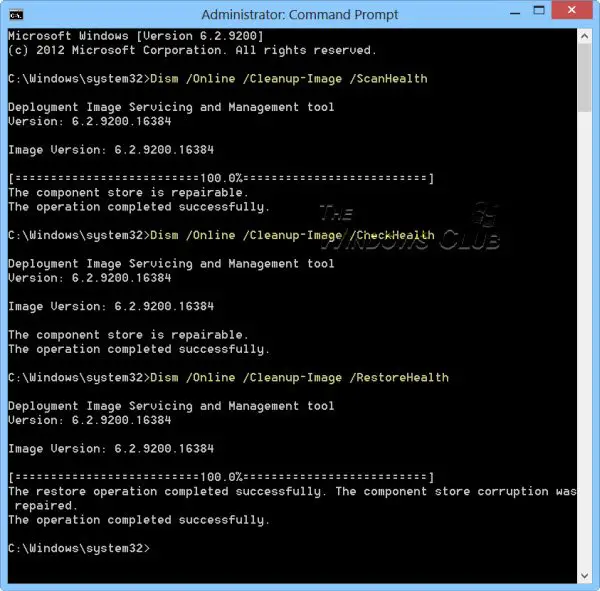
VSS errors often arise due to unserviceable or corrupted Windows system images. In this case, you can try running the DISM tool to update the files and fix the issue. You can also use the additional switches to fix any inconsistencies and damage.
5] Address different VSS errors
There are other solutions that you can try based on the type of VSS error you encounter, for example, re-registering the VSS DLL files, copying the required registry files from a working system, increasing the VSS timeout period, removing the oldest shadow copy for the drive, or increasing the limit of shadow copy storage.
While most of these solutions apply when the Volume Shadow Copy service not working, you can check for specific solutions from the glossary of our posts on various VSS errors as below:
- VSS Error 0x80042326
- VSS errors 0x0000007E, 0x80042306, 0x80070057
- VSS error 0x80042304
- VSS Error 0x80042313
- VSS Error 0x80042312 or 0x80042317
- VSS error 0x81000202 or 0x81000203
- VSS error 0x80042315
- VSS error 0x80042314L
Some of the solutions include configuring the registry settings; hence, make sure that you create a backup of the registry data to restore any lost settings.
Read: How to delete Volume Shadow Copies in Windows
At the same time, make sure that your OS is up-to-date with the latest updates. If the issue persists, consider reinstalling the Volume Shadow Copy service. If none of these solutions work, you may need to perform a system restore or use third-party backup software to create backups and restore previous versions of files.
How do I turn on the volume shadow service?
To start the Volume Shadow Copy Service (VSS), as mentioned in the post, open the Run console (Win +R), type services.msc, and hit Enter. Now, scroll down to Volume Shadow Copy, right-click, and select Start. If Start is grayed out, access the service’s properties and set its Startup type to Automatic or Manual. Now, try starting the service again.
Why does VSS service stop?
VSS failures can often occur due to disk-related issues, that include full or failing disks, compromised RAID configurations, or using incompatible 4k drives with outdated systems. Besides, VSS may also stop working due to other hardware failures that interfere with snapshot creation by VSS Writers.
Leave a Reply